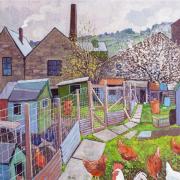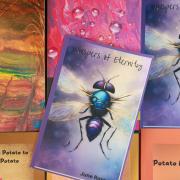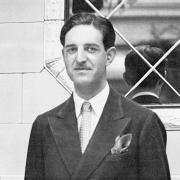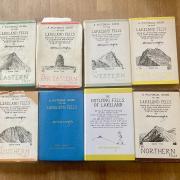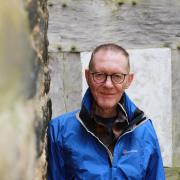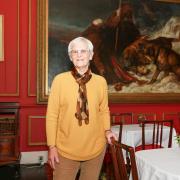Clare Bigger’s striking work landed her a place on a TV art show. Irene Amiet visited her studio

Clare Bigger's talent really shines when she starts work in her Ribble Valley studio. Her polished steel sculptures are admired by a host of people who appreciate the drama and movement she manages to capture. But she recently had the chance to demonstrate her art to a much wider audience.
Clare took part in the pilot of a BBC1 show called Home is Where the Art Is, presented by Nick Knowles. She was one of three artists challenged to create a beautiful piece for a woman from Silverdale with a remarkable devotion to her horse, called Dragon.
He had helped her to recover after a terrible accident. Clare and two others put forward proposals but it was her plan for a sculpture of the horse that won the show - and the commission to create a statue of the animal.
Clare started working in metal because wood, clay and stone would not allow her work to convey movement. 'At art college, all my sculptures used to collapse when I needed them to stand on one leg or arm,' says Clare, while studying a sculpture of a female dancer she's currently finishing. The sun is out and her workshop's doors are open to the woods beyond Simonstone. The light dances to its to its own tune on the metal of her ballerina.

Clare is hoping to have the sculpture in a future exhibition so long as her busy schedule as a working artist and mother of two will allow it.
Her work embodies what can't be caught - air, lightness and movement, often in people, but also in a variety of animals.
Studying art at Cardiff, Clare did a metal workshop and realised how steel armature could lift a sculpture off the ground when the surrounding material was light enough.
Plaster made her work too heavy, so she first experimented with stretching tights over the steel skeleton and later found her preferred medium in stainless steel, which she cuts into curved shapes and bends to give her sculptures body, or rather the suggestion of it.

Clare might be best known for some her oversized work like the 'Leaping Man' who graces a large industrial development in Milton Keynes.
She was approached by the property developer after the 2012 Olympics and the idea came up to use Milton Keynes's native Greg Rutherford who'd won a long jump gold medal in London, as the model.
When the 8 metre figure was unveiled in 2014, Greg was presented with a smaller version of the sculpture which he later used as his Instagram image. In 2005 Clare made headlines with her sculpture 'Spirit of Wigan' which stands 10 metre tall at the Landgate Roundabout close to the town's junction with the M6 motorway.
At the time, Clare said about her work: 'Wigan has strong roots in the industrial past and is still growing today.

'The archway is a bold and welcoming statement to visitors to the town. The two figures at the base of the sculpture represent the men and women that worked within the cotton and coal industries, establishing the foundations of Wigan.' A small model for the sculpture is on display in her Simonstone showroom.
Even though her work space is crammed with tools, gas bottles, a desk covered in cut-outs of a model ballet dancer in various poses, and sketches done on ripped pieces of cardboard, she prefers to work with video to find the right images to draw from. 'Freeze frames of a person in action are much better to work with as I can see the before and after of a moment and choose the exact motion I'd like to replicate.'
A sculpture like the 'Leaping Man' is about 4 months of work. Clare does get help with structural work with sculptures of that size but otherwise works on her own. Not every one of her sculptures uses size to make an impact.
In her showroom, which Clare opens by appointment, many smaller pieces come into a life of their own; Owls with spread wings caught in their landing approach or a baboon running with its tail high in the air. Even a camel can be found. 'I got inspired at Blackpool, Zoo,' says Clare, laughing.
Not all inspiration is Lancastrian though or even from the UK. Clare was born in Kenya where her father worked as a tropical entomologist, and much of Clare's childhood was spent in Ghana.
When she was of secondary school age, she went to boarding school in England but would visit her parents in the Solomon Islands during school holidays. The local art made an impression on Clare. 'There was no TV, so I'd spend the evenings doing wood carvings like the natives did.' She'd always been drawn to 3D art work and remembers her first sculpture in primary school made from papier mache, something she occasionally does with her own children's school classes.
'It's sad how art takes a backseat in the curriculum these days,' says Clare, whose son likes to experiment with wax sculptures in her workroom.
Clare, a keen cyclist, enjoys modelling sculptures from dancer's poses.
'I find it incredible to be able to train your muscles until they can do exactly what you need them to do and hold a pose, or make your body move a certain way,' says Clare while adjusting the chin on her dancer that looked too round for her liking.
She puts on her protective gear and attaches a more acutely angled piece of metal to give her sculpture the right suggestion of an expression.
'I often work all day to throw the metal on, only to change it all in the morning. I need to stand back at times and figure out what to do to make the sculpture move more.'
Just like dancers who turn athleticism into something ethereal and light on stage, Clare manages to transform steel into a porous matter that seems to keep her sculptures moving instead of being trapped in a status quo. The material has the added advantage to be hardy enough for any outdoor climate. Her work is enough to bring a little shine to the dullest of days. u
Clare shows her work at the 'Contemporary Six' Gallery on Princess Street in Manchester.






